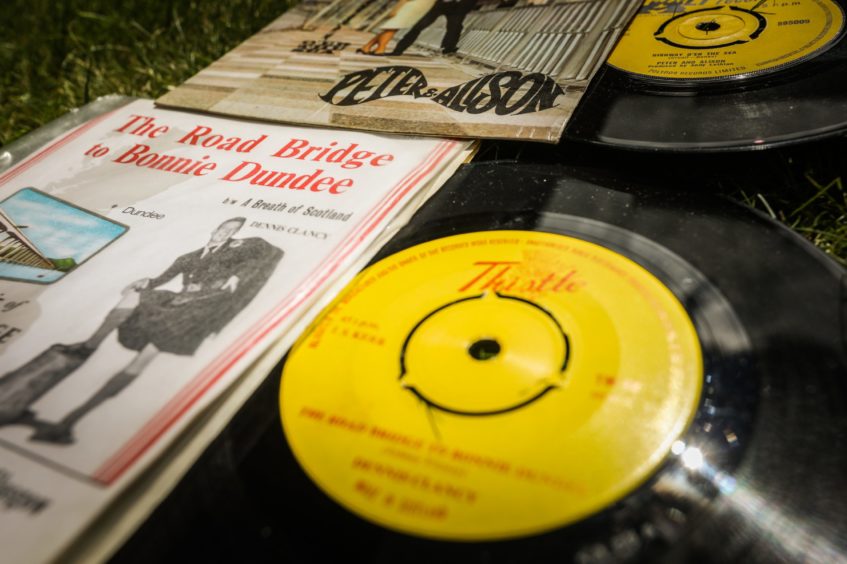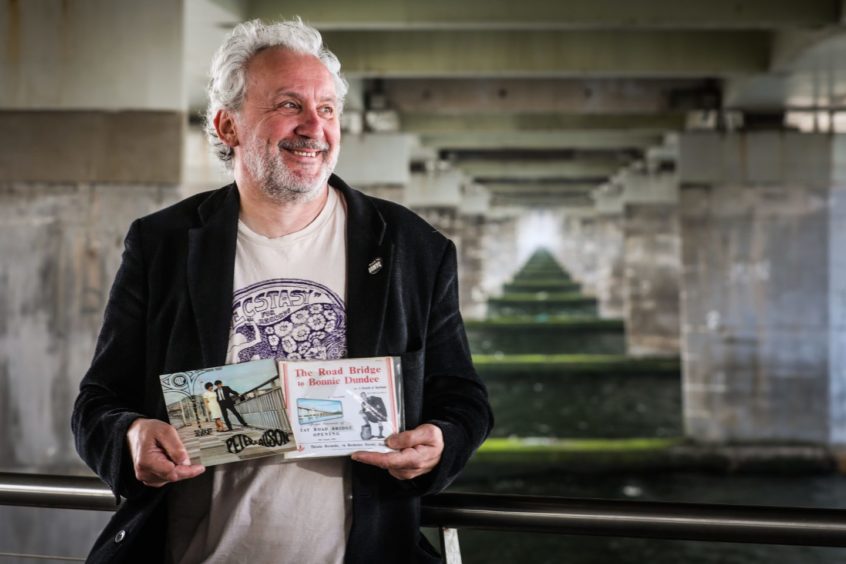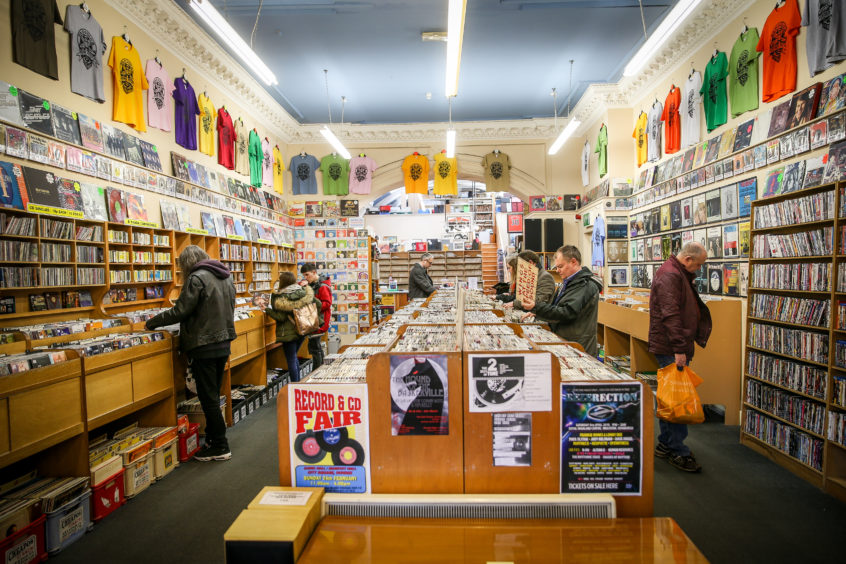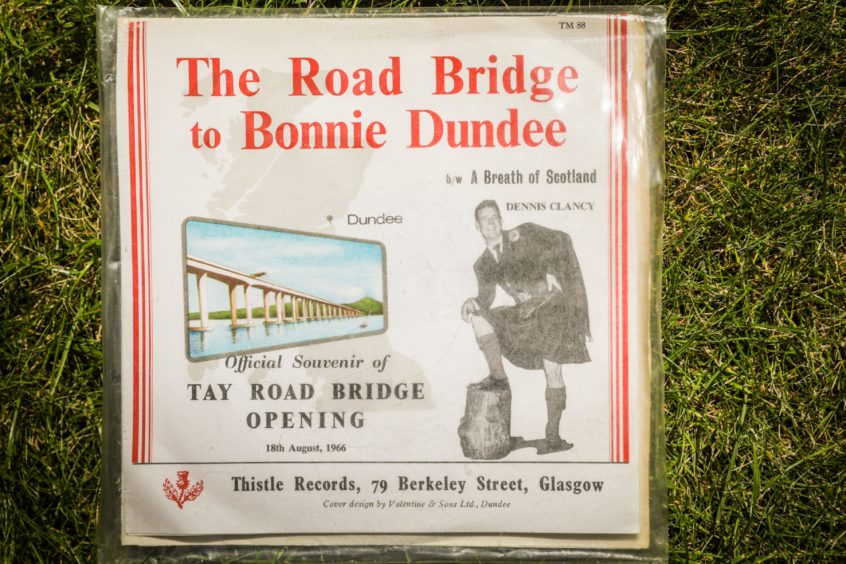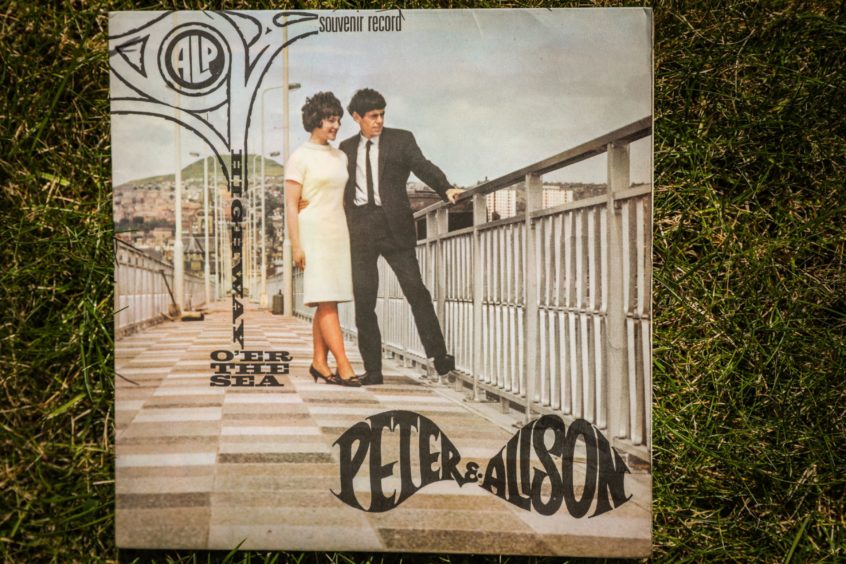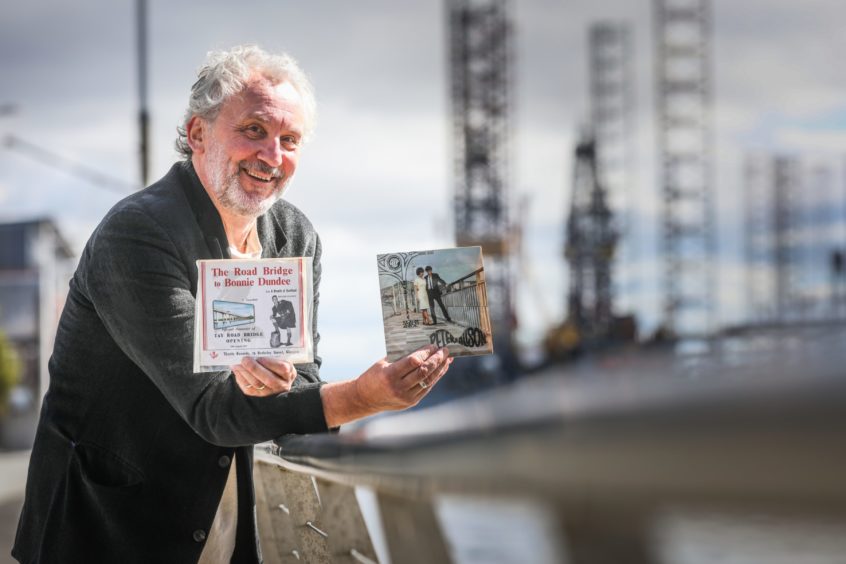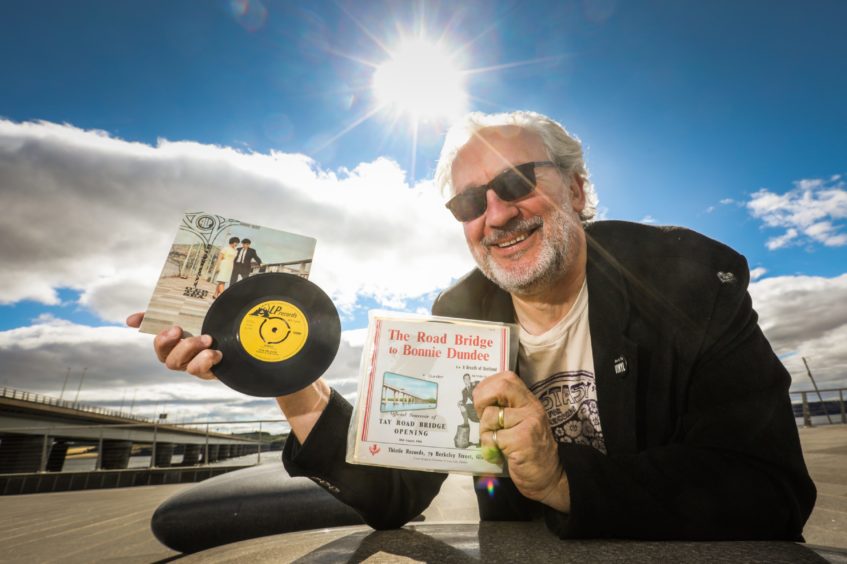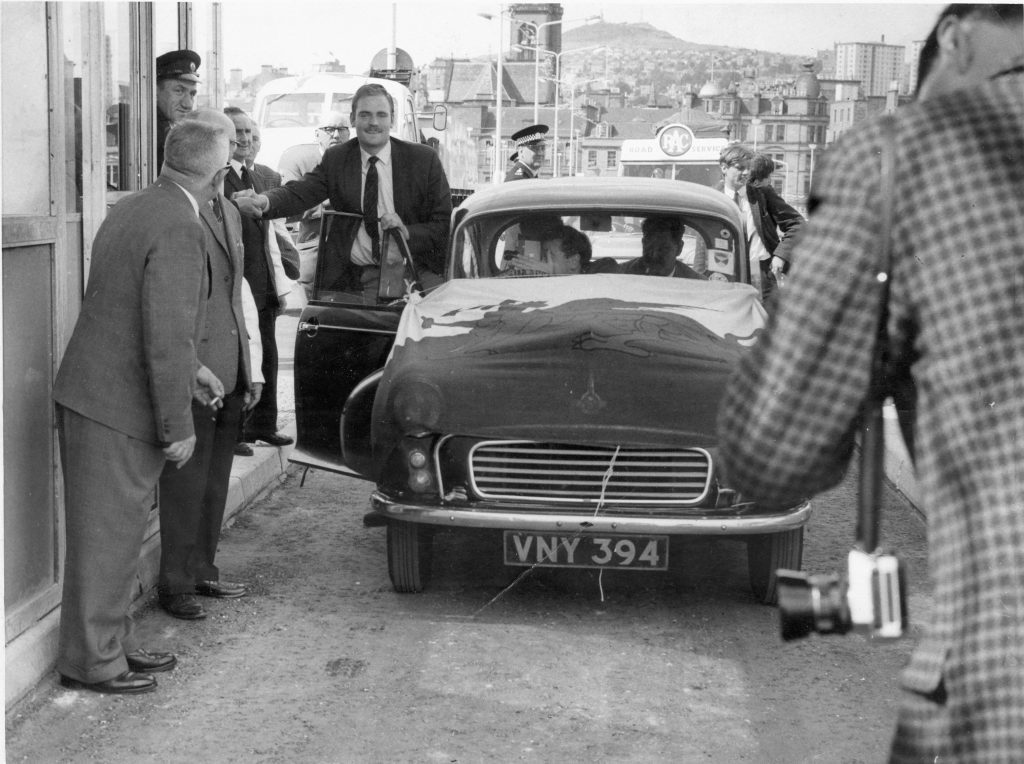Two forgotten records released to mark the opening of the Tay Road Bridge will return to the airwaves after almost 55 years.
The late Dundee-born Scottish balladeer and entertainer Dennis Clancy performed The Road Bridge to Bonnie Dundee and Dundee duo Peter and Alison released a single called Highway O’er The Sea which was a double A-side with the Mingulay Boat Song.
Peter and Allison were described as “Scotland’s exciting new stars” and the record sleeve was a photograph of the boyfriend and girlfriend on the walkway.
Both records are extremely rare.
Radio DJ Shane Quentin searches for gold among the dust and vinyl and he discovered the commemorative records at an auction recently.
Shane, who has just moved to Dundee from Northampton, found them in pristine condition among a stash of Scottish vinyl.
Shane said: “The stash of Scottish vinyl was literally 99% Scottish with only a stray Slim Whitman disc in the lot, and it was among these discs I found a few Dundee-related singles including two released in 1966 to celebrate the opening of the Tay Road Bridge.
“They are in such beautiful condition which is unusual for something that would have been well played and loved and is over 50 years old.
“It’s fantastic to have discovered these commemorative records, especially in such beautifully clean and unscratched condition, which shows that the previous owner must have really treasured them and kept them safe.
“Dundee has a few incredible independent record shops: even when I lived 400 miles away in Northampton, I was aware of Groucho’s legendary status as one of the best places to dig for records in the whole of Scotland!
“I’ve enjoyed visiting the recently re-opened Le freak shop on the Perth Road, so it has been well worth it for me relocating to Dundee.
“There are certainly more independent record shops here than in Northampton or Milton Keynes.
“I will certainly be playing both Tay Road Bridge singles on my show.”
Shane said his record collecting is “more a way of life than a side project”.
It was around 40 years ago that record sales first began to dwindle when cassettes took a share of the market.
Compact discs became the format of choice for recorded music through the late 80s and 90s before the first decade of the 21st century was dominated by the digital download age.
Around 10 years ago vinyl records became popular again and sales have been surging in recent years with mere nostalgia also playing a part in its popularity.
Shane said: “My interest in record collecting really came about in the early 70s, when my father opened a second hand store called Sellit & Soon.
“There were no other second hand or charity shops in this new city, so a business for buying and selling old furniture and household bits proved to be perfect timing.
“I worked in the shops at weekends and dad was happy to pay me in records from the racks of vinyl piling up in the shop rather than in cash.
“This arrangement suited me fine as I got the chance to take home all the bizarre and more unusual records that were coming in.
“I went onto Jim’ll Fix It as a kid my dad paid me £10 to wear a T-shirt on the show advertising the shop’s name.
“Anyway, I had discovered an interest in weirder records, which I pored over for their music as well as sleeve artwork.
“My bedroom as time progressed became a magnet for like-minded music friends keen to hear some of these sounds in the comfort of a pillow-scattered floor.
“I also started collecting records on space, football and spoken word oddities.
“By the 80s when the car boot phenomenon took off I was in my element, as dad’s shops eventually faded out, while I carried on digging for vinyl wherever and whenever I could, building up a collection of vinyl most would consider just plain odd.
“However I always kept the stuff I appreciated like Bowie, Velvet Underground, Talking Heads, flexi-discs and especially punk singles.”
Shane has written for several magazines including Record Collector and also last year contributed his flexi-discs to a book on the subject.
In 1991 quite by chance he visited a local radio station in Milton Keynes with a friend and found the presenters’ devil-may-care, anything-goes attitude to doing radio intoxicating and joined up.
Shane found a weekly opportunity to play out his collection to a wider audience.
After almost 30 years he is still with the same station where he will continue to host his show from Broughty Ferry after moving to Dundee with his Scottish wife.
He added: “The lack of car boots or even charity shops being open currently during lockdown means that I have to find alternative ways of feeding my insatiable collecting habit, but there are still private sellers and auctions for now and I am still working my way through things I bought before moving north.
“The thrill of the hunt, possibly finding something I don’t yet have, or finding something I do have but in better condition, is what keeps me looking.
“Having started my collection during the 1970s in my teens, the combination of audio, visual and tactile appeal was irresistible.
“Via my online radio show, I have been able to play out my finds and have a sizeable following for my eclectic mixes.
“I recommend anyone discovering their passion for vinyl should keep their eyes peeled in second hand record stores or local charity shops.
“Even the occasional car boot sale can be good for records.”
Shane’s most prized records are original UK albums that he came across ‘out in the wild’ years ago and despite over 40 years of digging he has never come across them again.
These include the first Velvet Underground album (the issue before the most well known ‘banana sleeve’ copy), an original ‘Safe As Milk’ by Captain Beefheart and his Magic Band, and a first pressing of David Bowie’s ‘Hunky Dory’.
People can listen to Shane’s show here.
History of a famous road bridge
On August 18 1966 the Tay Road Bridge was officially opened by the Queen Mother.
It was designed by William Fairhurst and William Logan won the contract to build it.
Work cost around £6 million and was built with 140,000 tons of concrete, 4,600 tons of mild steel and 8,150 tons of structural steel.
It was the culmination of just over three years of hard toil and labour by hundreds of hardy men.
Previously, workers had to hop on board the Fifies – the ferries which sailed between Newport and Dundee – or embark on a lengthy journey by road if they wanted to get to jobs across the water.
Proposals for a road bridge had first been mooted in 1918 when renowned city architect James Thomson, suggested a road bridge could be built on the old piers of the first rail bridge.
The idea was rejected by the Ministry of Transport but numerous campaigns were launched over the years to have a bridge built.
By the 1930s, there were proposals for a traditional bridge to the west of the rail bridge, but that was too expensive.
It wasn’t until the 1960s that it became viable and affordable although the construction of the bridge wasn’t without its controversy.
As the site deemed most suitable, builders were required to demolish Dundee’s historic 120-year-old Royal Arch, built to commemorate a visit by Queen Victoria in 1844.
The bridge carried 70,000 vehicles that first weekend, averaging out at 6,000 vehicles per day thereafter.
Over its history, the Tay Road Bridge has been hit three times by ships and in 2013 work was completed to protect it by encasing the piers in concrete.
